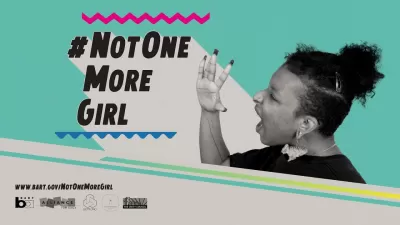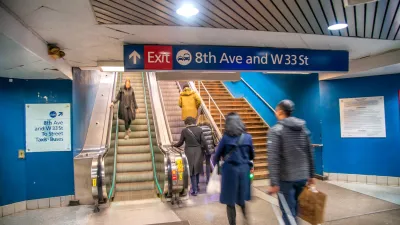The Washington Metropolitan Transit Authority (WMATA) recently launched a new campaign to combat sexual harassment and assault—especially toward some of the most marginalized members of the community.
"More people experience sexual assault on Metro trains and buses than you might think, and the victims are often women, trans people, and people of color," writes Jessica Raven, citing the shocking example of a sexual assault at knife point on the Red Line earlier this year. There's also Metro Transit Police data showing "that most incidents of public sexual harassment and assault occurred on the busier Red and Orange lines, most frequently during rush hour," adds Raven, and a study of sexual harassment on the system that shows one in five Metro or Metrobus riders have experienced sexual harassment on the system.
To combat the violence, the WMATA has launched a new awareness campaign, working with Collective Action for Safe Spaces (CASS) and Stop Street Harassment. The new campaign builds on past efforts "to demonstrate its commitment to serving those who are most marginalized and most likely to be targeted by sexual and gender-based harassment," explains Raven.
On November 4th, an awareness campaign launched with ads featuring the faces of trans women of color and Muslim women. The ads, which appear on trains, at Metro stops, and on buses, come on the heels of incidents where these identities were targeted at DC's Shaw Library and Banneker Pool.
While approving of the tone of the campaign's content, Raven also suggests five additional measures, including new training for staff, supervisors, and police, to fully eradicate the problem.
FULL STORY: Sexual violence isn’t uncommon on Metro. Here’s what WMATA is doing to fix that.

Alabama: Trump Terminates Settlements for Black Communities Harmed By Raw Sewage
Trump deemed the landmark civil rights agreement “illegal DEI and environmental justice policy.”

Planetizen Federal Action Tracker
A weekly monitor of how Trump’s orders and actions are impacting planners and planning in America.

The 120 Year Old Tiny Home Villages That Sheltered San Francisco’s Earthquake Refugees
More than a century ago, San Francisco mobilized to house thousands of residents displaced by the 1906 earthquake. Could their strategy offer a model for the present?

In Both Crashes and Crime, Public Transportation is Far Safer than Driving
Contrary to popular assumptions, public transportation has far lower crash and crime rates than automobile travel. For safer communities, improve and encourage transit travel.

Report: Zoning Reforms Should Complement Nashville’s Ambitious Transit Plan
Without reform, restrictive zoning codes will limit the impact of the city’s planned transit expansion and could exclude some of the residents who depend on transit the most.

Judge Orders Release of Frozen IRA, IIJA Funding
The decision is a victory for environmental groups who charged that freezing funds for critical infrastructure and disaster response programs caused “real and irreparable harm” to communities.
Urban Design for Planners 1: Software Tools
This six-course series explores essential urban design concepts using open source software and equips planners with the tools they need to participate fully in the urban design process.
Planning for Universal Design
Learn the tools for implementing Universal Design in planning regulations.
Clanton & Associates, Inc.
Jessamine County Fiscal Court
Institute for Housing and Urban Development Studies (IHS)
City of Grandview
Harvard GSD Executive Education
Toledo-Lucas County Plan Commissions
Salt Lake City
NYU Wagner Graduate School of Public Service





























